Phonological neighbourhoods in the developing lexicon
- PMID: 12846305
- PMCID: PMC5524141
Phonological neighbourhoods in the developing lexicon
Abstract
Structural analyses of developing lexicons have provided evidence for both children's holistic lexical representations and sensitivity to phonetic segments. In the present investigation, neighbourhood analyses of two children's (age 3;6) expressive lexicons, maternal input, and an adult lexicon were conducted. In addition to raw counts and frequency-weighted counts, neighbourhood size was calculated as the proportion of the lexicon to which each target word is similar, to normalize for vocabulary size differences. These analyses revealed that children's lexicons contain more similar sounding words than previous analyses indicated. Further, neighbourhoods appear denser earlier in development relative to vocabulary size, presumably because children first learn words with more frequent sounds and sound combinations. Neighbourhood density as a proportion of the size of the lexicon then decreases over development as children acquire words with less frequent sounds and sound combinations. These findings suggest that positing fundamentally different lexical representations for children may be premature.
Figures
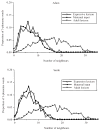
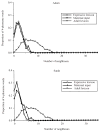
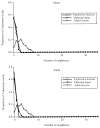
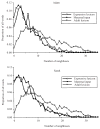
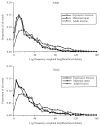


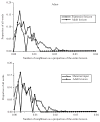
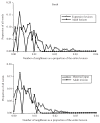
Similar articles
-
The structure and nature of phonological neighbourhoods in children's early lexicons.J Child Lang. 2009 Jan;36(1):3-21. doi: 10.1017/S0305000908008829. Epub 2008 Sep 23. J Child Lang. 2009. PMID: 18808731
-
Similarity neighbourhoods of words in young children's lexicons.J Child Lang. 1990 Feb;17(1):205-15. doi: 10.1017/s0305000900013180. J Child Lang. 1990. PMID: 2312642
-
Children's phonological neighbourhoods: half empty or half full?J Child Lang. 1994 Jun;21(2):257-71. doi: 10.1017/s0305000900009260. J Child Lang. 1994. PMID: 7929681
-
Nouns in early lexicons: evidence, explanations and implications.J Child Lang. 1993 Feb;20(1):61-84. doi: 10.1017/s0305000900009120. J Child Lang. 1993. PMID: 8454687 Review.
-
Early object labels: the case for a developmental lexical principles framework.J Child Lang. 1994 Feb;21(1):125-55. doi: 10.1017/s0305000900008692. J Child Lang. 1994. PMID: 8006089 Review.
Cited by
-
Uses and interpretations of non-word repetition tasks in children with and without specific language impairments (SLI).Int J Lang Commun Disord. 2008 Jan-Feb;43(1):1-40. doi: 10.1080/13682820601116485. Int J Lang Commun Disord. 2008. PMID: 18176883 Free PMC article. Review.
-
Phonotactic probability effects in children who stutter.J Speech Lang Hear Res. 2008 Aug;51(4):851-66. doi: 10.1044/1092-4388(2008/062). J Speech Lang Hear Res. 2008. PMID: 18658056 Free PMC article. Clinical Trial.
-
Lexical Preferences in Greek-Learning Children with Cochlear Implants: A Retrospective Analysis of Sonority-Based and Prosodic Lexical Structures.J Psycholinguist Res. 2025 Jul 17;54(4):48. doi: 10.1007/s10936-025-10160-6. J Psycholinguist Res. 2025. PMID: 40676476
-
Individual differences in the influence of phonological characteristics on expressive vocabulary development by young children.J Child Lang. 2006 Aug;33(3):439-59. doi: 10.1017/s0305000906007458. J Child Lang. 2006. PMID: 17017275 Free PMC article.
-
Is phonological encoding in naming influenced by literacy?J Psycholinguist Res. 2007 Sep;36(5):341-60. doi: 10.1007/s10936-006-9048-1. J Psycholinguist Res. 2007. PMID: 17318434
References
-
- Aslin RN, Jusczyk PW, Pisoni DB. Speech and auditory processing during infancy: constraints on and precursors to language. In: Kuhn D, Siegler R, editors. Handbook of child psychology: cognition, perception, and language. Vol. 2. NY: Wiley; 1998.
-
- Brown R. A first language: the early stages. Cambridge, MA: Harvard University Press; 1973.
-
- Carey S. The child as word learner. In: Halle M, Bresnan J, Miller G, editors. Linguistic theory and psychological reality. Cambridge, MA: MIT Press; 1981.
-
- Charles-Luce J, Luce PA. Similarity neighbourhoods of words in young children’s lexicons. Journal of Child Language. 1990;17:205–15. - PubMed
-
- Charles-Luce J, Luce PA. An examination of similarity neighbourhoods in young children’s receptive vocabularies. Journal of Child Language. 1995;22:727–35. - PubMed
Publication types
MeSH terms
Grants and funding
LinkOut - more resources
Full Text Sources
